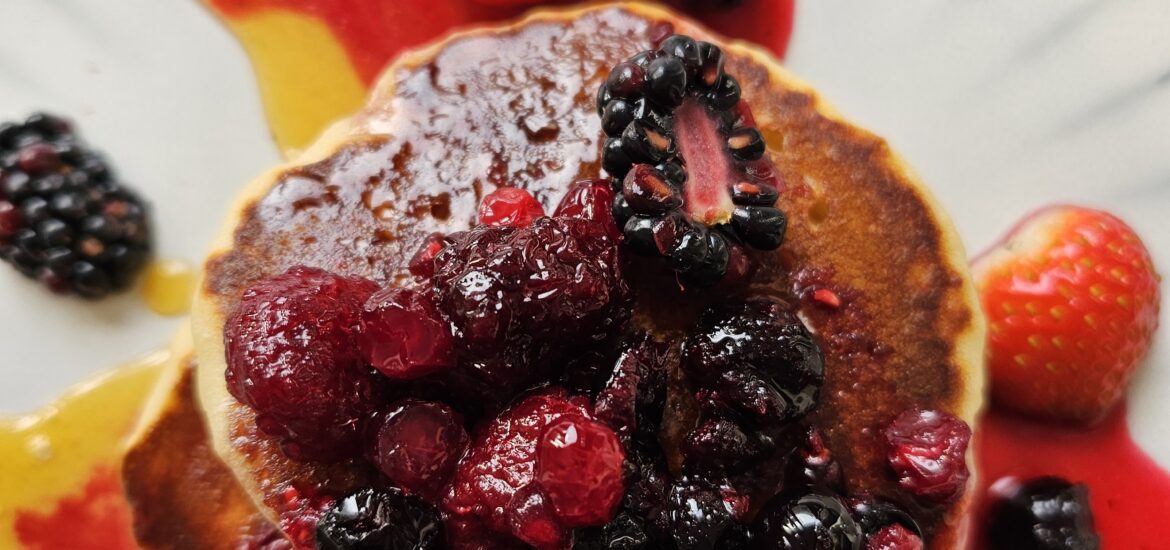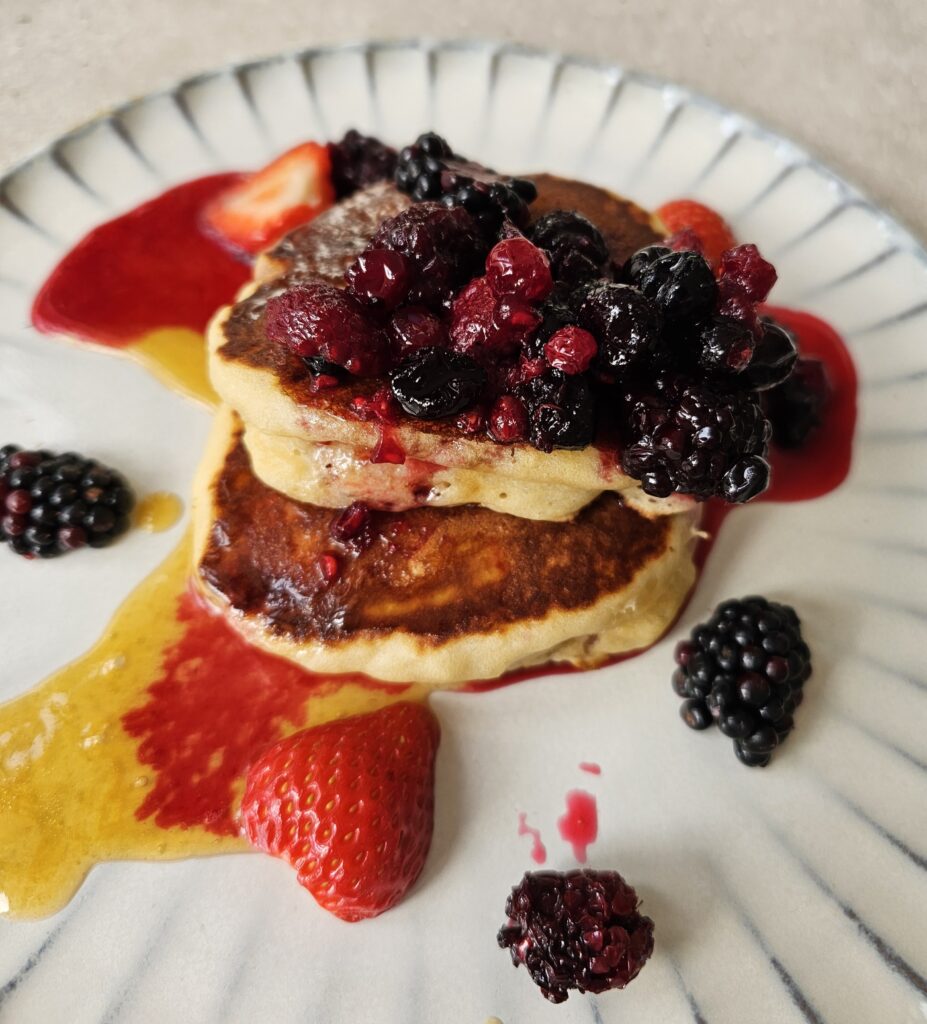
This is a continuation of the previous post which introduced the pancakes, along with the original recipe (Golden Diner Pancakes) from the New York Times.
My mother struggles with retaining a lot of things in her memory and naturally at her age (85) she is slowing down a lot physically. To cheer her up with her tasks I always say: work smart, not hard. Following my own advice, here is my take on the Golden Diner Pancakes. I have simplified the steps but the results are still excellent.
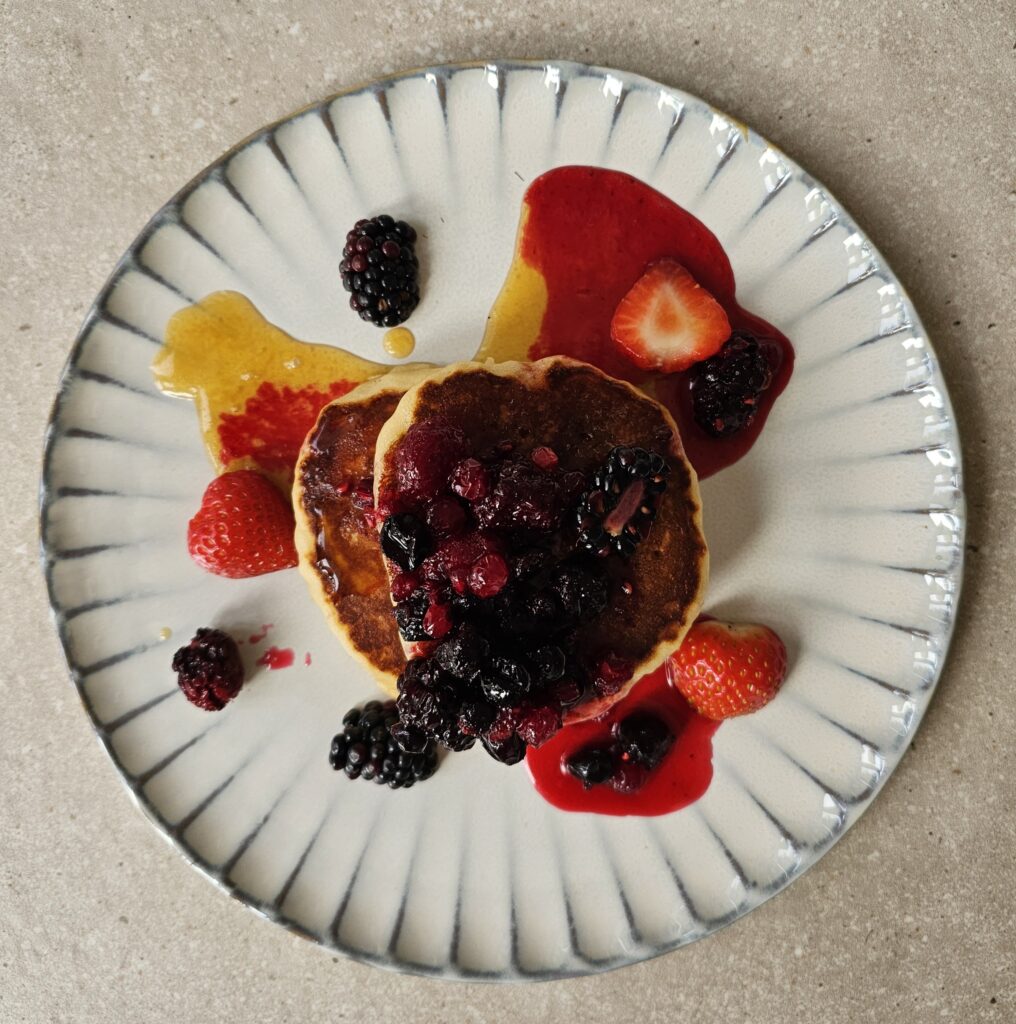
FOR THE PANCAKE BATTER:
2¼ teaspoons active dry yeast (I use Allinson’s brand)
2 x 130 g plain flour (260 g total)
300 g buttermilk
60 g water
2 tablespoons sugar
¾ teaspoon bicarbonate of soda
½ teaspoon fine sea salt
2 large eggs
60 g sunflower oil
FOR THE MAPLE-HONEY SYRUP:
115 g unsalted butter
100 g runny honey
1½ tablespoons maple syrup
1 teaspoon soy sauce
½ teaspoon fine sea salt
1½ tablespoons water
FOR THE BERRY COMPOTE:
I used a mixed berry cheong (see previous post) which is one part fruit to one part sugar, stirred together and stored in the fridge for around two weeks before using. Alternatively it is possible to buy ready made fruit compote from e.g. Bonne Maman.
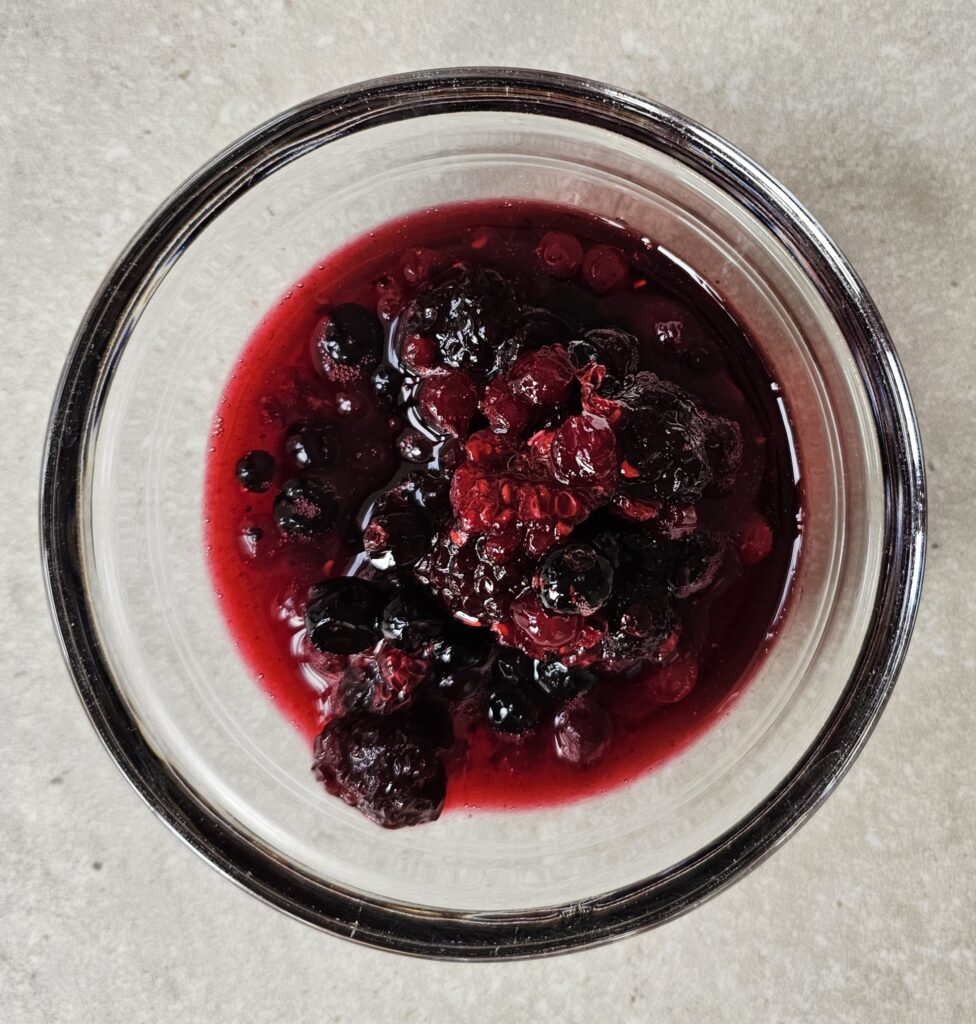
How to Make:
PANCAKE BATTER
In a large mixing bowl, whisk the yeast with 130 g flour.
In a small saucepan, heat the buttermilk and water over a medium-low heat, stirring often, until lukewarm. As I have a Thermomix, I used it to heat the buttermilk and water to 37 C, which is the right temperature to activate yeast. A hand-held digital laser thermometer would also work here.
Pour the buttermilk into the flour and whisk until smooth. Cover with plastic wrap (I used a silicone cover) and let this rest for one hour to create a pre-ferment. This will give the pancakes a deeper flavour and some additional rise.
In the meantime, whisk the remaining 130 g flour with the sugar, bicarbonate of soda and salt in a small bowl.
In a large mixing bowl, whisk the eggs and oil until smooth. Leave both the flour and egg mixture to the side.
Now prepare the maple-honey syrup.
This is what the yeast, buttermilk and flour mixture looks like after an hour
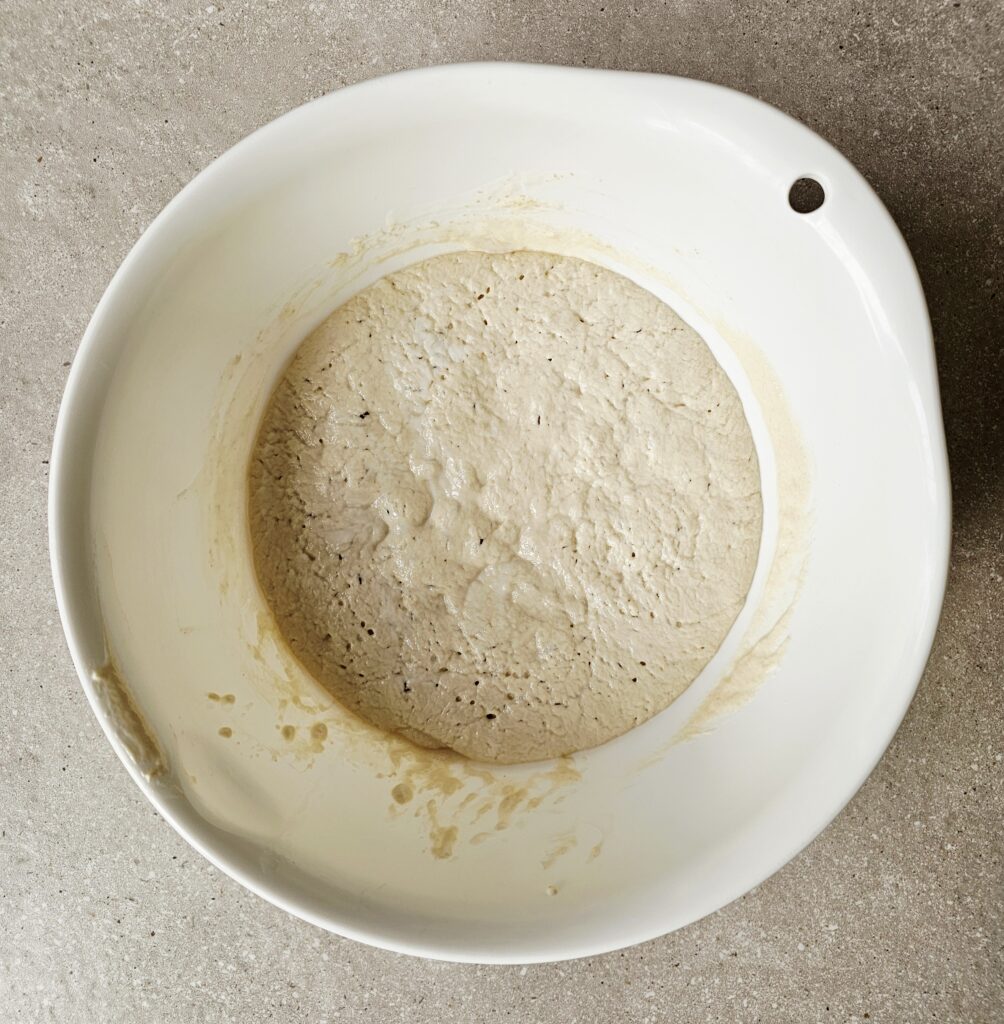
MAPLE-HONEY SYRUP
Combine the butter, honey, maple syrup, soy sauce and salt in a small saucepan. Heat over medium-low, whisking often, until the butter melts completely. While whisking, add 1½ tablespoons water. Keep whisking until emulsified, then reduce the heat to the lowest setting to keep warm.
If storing, the butter will eventually rise to the top. I microwaved the syrup to use the next time I ate the pancakes. At a push you could serve the pancakes with a curl of salted butter, some maple syrup and the berry cheong/ compote. It boils down to how much time you have and how much effort you want to make. I think you can compromise on all elements of the original recipe but it is essential to get the pancakes right.
COOK THE PANCAKES
Pre-heat the oven to 135 C fan/ 150 C (this is a lower temperature than in the NY Times recipe, as I found that the pancakes were pretty much cooked through when fried in the pan).
Line a large and flat tray for keeping the pancakes warm in the oven.
Pour the pancake fermentation into the egg mixture, followed by the rest of the dry flour mixture. Mix together, but it is not necessary to make it completely smooth. A few lumps here and there is ok.
I made the pancakes twice. The first time I scooped the batter using a large serving spoon and fried a few in a large 28 cm non-stick frying pan. The second time I fried one large pancake at a time using a the suggested 8-inch / 20 cm nonstick pan, which was around 6- inches/ 15cm across the bottom. Either way, the non-stick pans do not need greasing.
Smaller pancakes:
Spoon large scoops of pancake batter onto the 28 cm pan, which is set over a medium heat. You should get around five on the outside and one in the middle. A large capacity ice cream scoop would work well here. Cook until the bottom is crisp and evenly golden brown, 2 to 4 minutes, turning down the heat if the bottom browns too quickly. Flip and cook until the other side crisps and browns evenly, 1 to 3 minutes.
As you finish cooking one batch, remove and keep warm in the oven. Continue until all the batter is used up. Serve with the maple-honey syrup and fruit compote.
Larger pancakes:
Fill the 20 cm pan (set to medium heat) with batter to about ⅓-inch depth. Smooth the top to ensure the batter forms a nice round. Cook until the bottom is crisp and evenly golden brown, 2 to 4 minutes, turning down the heat if the bottom browns too quickly. Flip and cook until the other side crisps and browns evenly, 1 to 3 minutes.
As you finish cooking each pancake, remove and keep warm in the oven. Continue until all the batter is used up. Serve with the maple-honey syrup and fruit compote.
The second batch of pancakes
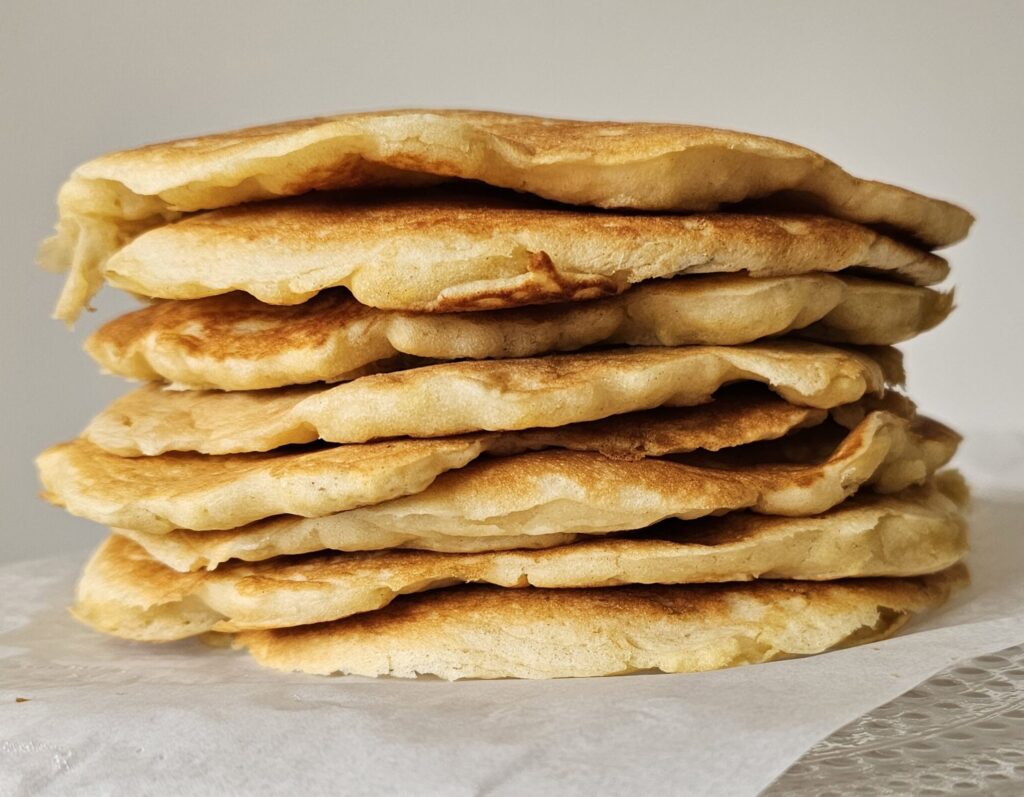
I much preferred the smaller pancakes. With the larger pancakes, I used a large ladle to scoop out the batter then proceeded to smooth the top as advised by the recipe. However the resulting pancake was flatter and not as spongy as the smaller pancakes.
The ideal pan would be a 12 cm one-egg or blini pan but not many manufacturers make one for an induction hob. De Buyer does one (the Mineral B blinis pan), and you could ask your local kitchen shop to source one for you.
My final word on this is that I would probably skip the honey-maple syrup next time, as it was fiddly to heat it up for subsequent sittings. I would make every element in the original recipe once for fun, but for a Saturday morning breakfast you need to eat well and keep sane at the same time. My next batch would be: small pancakes, maple syrup, grilled streaky bacon on the side. A large glass of freshly pressed orange juice and a bowl of fresh Summer berries for fruit and fibre, then a cup of green tea for more hydration.
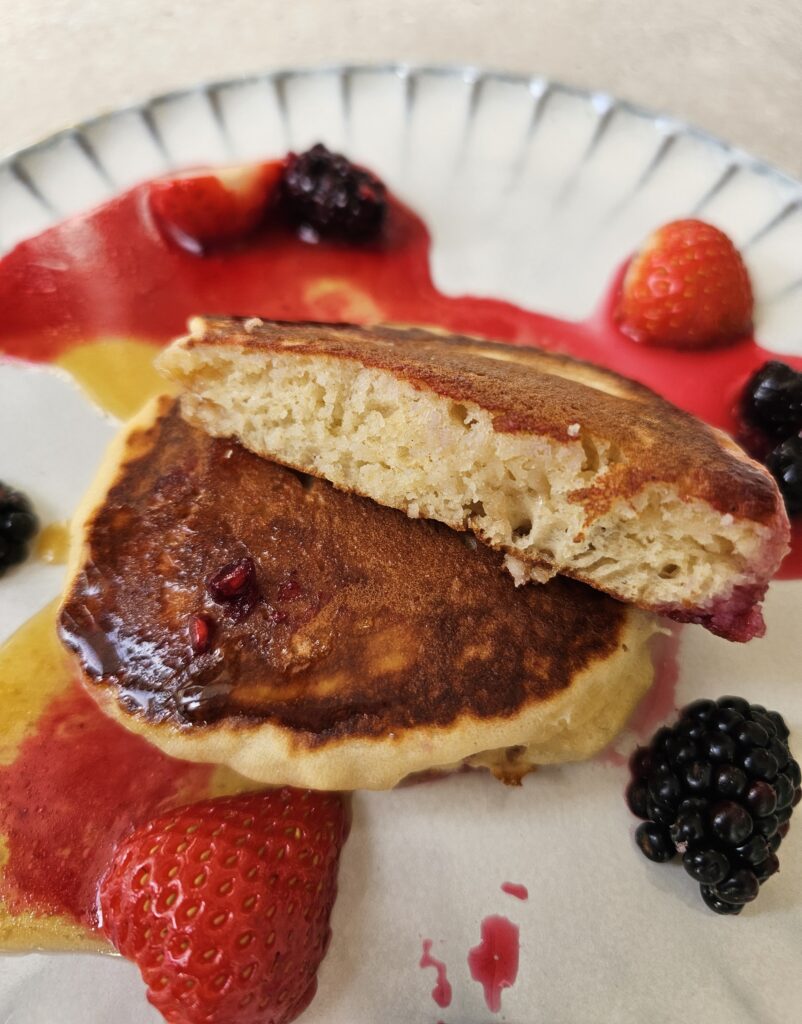
PS: Work smart, not hard. 10 years ago I undertook a big pulled pork project for this blog, based on a recipe from Pitt Cue. It took a few days but divided into chunks it was manageable. Since then the children have left home and we eat much less meat. Maybe we should make it for Christmas this year, if we are in London.
